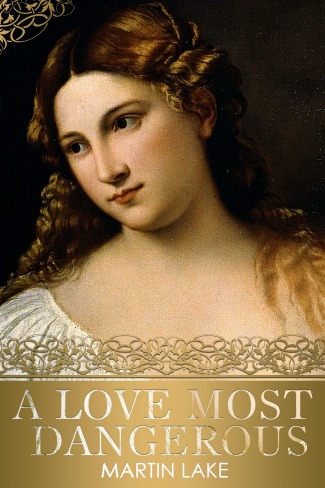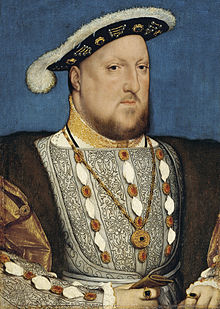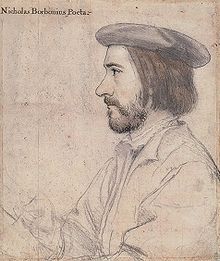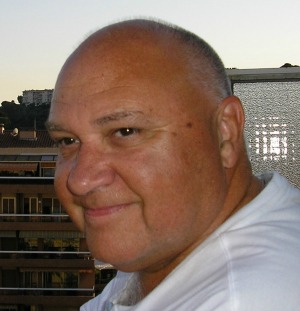 It’s my pleasure to welcome Martin Lake author of A Most Dangerous Love, and the writer of numerous books. A Most Dangerous Love is an adventurous romp through King Henry the VIII’s court, private quarters, and the filth of London during the Tudor era. Lake has brought to life the fictional protagonist, Alice Petherton, a maid-of-honor to Queen Jane Seymour, Henry’s third wife. The novel explores and reveals the difficulties of being a young beauty, for being attractive can be dangerous. Lake exposes the struggles and sacrifices to live, when one possesses an alluring countenance and a clever mind. The costs are high as is the danger. The story is well-written, with well-drawn characters, and beautiful metaphors and similes throughout. It is a fast paced read, and if you love the Tudor era you’ll enjoy this speculative tale.
It’s my pleasure to welcome Martin Lake author of A Most Dangerous Love, and the writer of numerous books. A Most Dangerous Love is an adventurous romp through King Henry the VIII’s court, private quarters, and the filth of London during the Tudor era. Lake has brought to life the fictional protagonist, Alice Petherton, a maid-of-honor to Queen Jane Seymour, Henry’s third wife. The novel explores and reveals the difficulties of being a young beauty, for being attractive can be dangerous. Lake exposes the struggles and sacrifices to live, when one possesses an alluring countenance and a clever mind. The costs are high as is the danger. The story is well-written, with well-drawn characters, and beautiful metaphors and similes throughout. It is a fast paced read, and if you love the Tudor era you’ll enjoy this speculative tale.
Stephanie Renée dos Santos: How did you decide or I should say, what attracted you to your protagonist Alice Petherton?
Martin Lake: I had just finished writing the first draft of the third novel in my series about the last English king of England. I like to rest a book after the first draft and had nothing to do. But I knew I wanted to write something, maybe a short story. It was very early in the morning. I sat at my computer and wrote a sentence:
“To be a servant at the court of King Henry is to live with your heart in your mouth. This is so whether you are young or old, male or female. I am young and I am female. So the danger to me is considerable.”
I sat back in my chair, intrigued. The character had a strong voice and, I came to realise, a strong will. I think it’s fair to say that the early part of the novel was very easy to write; in a way I think that Alice had more to do with it than me. I was certainly intrigued by a young woman who decided to become the lover of a man twice her age who had already dispensed with his first two wives and uncounted lovers. It was a long while before I found the reason that she did so. In the meanwhile I was beguiled by her vivacity, her intelligence and her sense of survival.
SRDS: Is she a real historically documented person from the Tudor era?
ML: No. Henry VIII had many lovers and even made the son of one of them a Duke but Alice Petherton did not exist. Having said that, I was three-quarters of the way through the novel when I came across a reference to the two Shelton sisters, one of whom may have had an affair with Henry at about the time I set the novel. In some ways, Mary was rather similar to Alice which pleased me greatly.
What archival materials did you access to inspire and flesh out her
character?
ML: I was keen to find a picture which would represent Alice and spent a long time looking at portraits of the time. In the end I found Durer’s 1505 portrait of a young Venetian woman which I kept in mind as I wrote.
SRDS: How much of her character is based on real accounts?
ML: To be honest, I don’t think much at all. Women were not much written about at the time and if they were it was often because of prurient male interest. I like to think that there were plenty of women like Alice around. Despite her strong nature and determination she was one who managed to avoid too much grief.
SRDS: What went into your research for the time period?
ML: The authors I found most useful were Alison Weir and Ian Mortimer. They have a wealth of information and are easy to read.
I used a wonderful website which details 16th century costume (not a subject I have any expertise on) by looking at contemporary portraits. Unfortunately, I don’t seem to have bookmarked the site. So if any of your readers know about it please let me know. The other resources I made use of were maps and pictures of Henry’s palaces, maps of London, the web-site of the Tower of London and, most useful, the website of Hampton Court Palace with its descriptions and plans.
In terms of written material I made a great deal of use of the Lisle Papers. They are such a complete and rich treasure-house that I had to limit myself to how much time I spent reading them.
I also confess to using Wikipedia. People complain that it is rife with errors. There are some but I always try to triangulate the articles to make sure that they are backed up by other authorities. You can find some fascinating detail there. For example, this morning I needed to know the name of the French Ambassador at the time. Books by Alison Weir provided me a clue but it was Wikipedia which enabled me to flesh out the details.
SRDS: Are there some fascinating titbits that you were unable to include in
the novel, but can share here?
ML: Great question. The temptation of any historical writer is to shove in all the fascinating things they have found but I think it is important to resist putting in anything which does not add to the story. I think the thing which I would most liked to have included was how manipulative, callous and ambitious Jane Seymour was. I’ve hinted at it but her nefarious nature is quite something. One thing I would love to have included was that she spent the whole day of Anne Boleyn’s execution in finalising her wedding ceremony and gowns. Now there’s one confident woman.
SRDS: What are you working on now?
ML: I’ve just written the first draft of a novel set in the time of Alfred the Great. It’s complex and needs a lot more layering. But in the meanwhile I’ve been drawn into a follow-on to A Love Most Dangerous. I’ve sketched out the plot and have found some fascinating new characters including a rather interesting and handsome Frenchman called Nicholas Bourbon.
I took one look at his picture and thought he has to play a big part in the novel.
About the author: Martin Lake lives on the French Riviera with his wife. After studying at the University of East Anglia he worked as a teacher, trainer and company director. A serious accident shattered his arm forcing him to rein back his work. However, every cloud has a silver lining, and he decided to concentrate on his life-long passion for writing. He writes a wide range of fiction. His main interests are historical fiction, short stories and young adult fiction. He has a series of novels set in the turbulent years following the Norman Invasion of England: The Lost King: Resistance, Wasteland and Blood of Ironside. Moving down the centuries and across the continent is Outcasts, the first novel in a series about the common men who were knighted by Balian of Ibelin to defend Jerusalem against Saladin.Artful is set in the middle years of the Nineteenth Century and concerns the further adventures of the young rascal after he has been transported to New South Wales.He’s currently working on a second novel about Alice Petherton, and a one set in the time of Alfred the Great. His work has been broadcast on radio. He won the first prize in the Kenneth Grahame Society competition to write a story based on ‘The Wind in the Willows.’ This is available at all e-reader outlets as are a further three collections of short fiction.
Visit Martin Lake at: http://martinlakewriting.wordpress.com Facebook: https://www.facebook.com/MartinLakeWriting Twitter: @martinlake14 Email: martinlakeonefour(at)gmail(dot)com . And subscribe to his newsletter: http://eepurl.com/DTnhb .
To Buy A Most Dangerous Love:
USA version: http://www.amazon.com/Martin-
UK version: http://www.amazon.co.uk/
Australia version: http://www.amazon.com.au/s?_





Please email me when the new book of Alice Petherton is available on Kindle. ladycrow@socal.rr.com
I’ll let the author know of your interest!